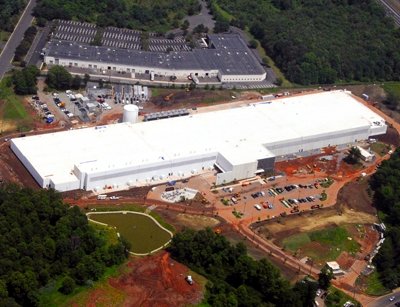The US Green Building Council (USGBC) is expecting to release an updated version of its rating system for sustainable construction and operation of buildings that will include requirements designed specifically for data centers, the organization’s spokeswoman confirmed Friday.
Called LEED 2012, the document is currently going through the public-comment portion of the process USGBC goes through to make it official, USGBC spokeswoman Ashley Katz wrote in an email.
While many data centers have received LEED (Leadership in Energy and Environmental Design) certifications, they were assessed using the current rating system for a broader category of buildings.
The USGBC is adopting its rating system to data centers because they are unique among construction projects, Corey Enck, director of rating system development at the council, wrote in a blog post.“Data centers have very few occupants, and they are huge energy users: a data center can use as much energy as a small town (really),” he wrote.
“Whereas a typical building is designed to meet heating and cooling needs for occupant comfort, a data center must provide massive cooling power for its servers. Water use is also a key target area for data centers, if the facility utilizes water for cooling.”
All of these aspects have been added to the version of LEED 2012 currently under review.
Owners of construction or building-upgrade projects get one of multiple levels of LEED certification by collecting points. There are specific guidelines for things to do during the project that earn LEED points. The more points you get, the higher the level of LEED certification your project will receive (Platinum, Gold, Silver, LEED in descending order).
Some actions are required to get considered for certification and some are not but add points to the score if taken. LEED 2012 prerequisites for data centers (in the version considered currently) include reduced water use indoors and outdoors, building-level water metering, minimum energy performance and building-level energy metering among many others.
Elements of the Energy and Atmosphere category can give data center projects the biggest number of non-prerequisite LEED points. Up to 18 points are offered for optimizing energy performance and up to six for enhanced commissioning.
The council tried to be as non-prescriptive as possible in creating the requirements for data centers. Owners only need to prove that they have saved energy over alternative solutions.
“The energy-modeling path to demonstrate achievement of energy performance does not dictate how a project should earn that performance,” Katz wrote. “Projects are instead rewarded based on percent energy saved.”
One of the metrics used to quantify how energy efficient a data center is will be Power Usage Effectiveness (PUE), but it will not be the only metric. Data centers will also have to demonstrate specific reductions in building energy cost and IT equipment energy cost.
Extra points can be earned for advanced energy metering, participating in demand-response programs, producing renewable energy or buying green power and carbon offsets.

